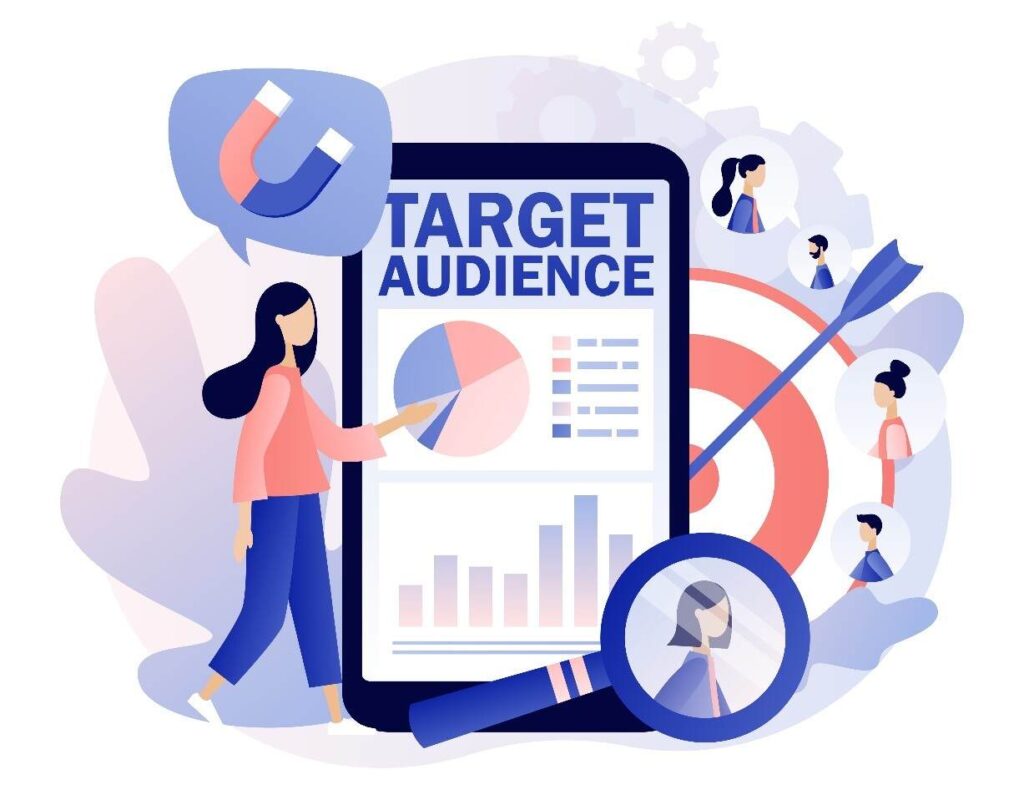How to Create an Effective B2B Marketing Plan

Whether you’re a seasoned marketer or a business owner looking to boost your company’s presence, a comprehensive B2B marketing plan can be a game-changer. A crucial element contributing to marketing effectiveness is understanding how your products bring value to your customers’ businesses. It’s not just a statement you are putting out there with well-crafted content but substantiating it.
To ensure that you can explicitly demonstrate how your products can minimize costs, enhance competitive advantages, or boost productivity for your customers you need an effective plan. Failing to plan, execute and demonstrate the value of your product or service can turn your strategy and brand into nothing more than another marketing gimmick.
In this guide, we’ll discuss what is a B2B marketing plan, discover essential tips for creating one, showcase real-world examples, and provide you with a basic B2B digital marketing plan template to get you started.
What is a B2B Marketing Plan?
A B2B marketing plan is a strategic roadmap that outlines the steps a business will take to promote its products or services to other companies. Unlike business-to-consumer (B2C) marketing, business-to-business (B2B) marketing targets a specific audience of decision-makers within organizations. The primary goal of a B2B marketing plan is to generate leads, nurture prospects, and ultimately convert them into loyal customers.

Key Components of a B2B Marketing Plan
Define Your Marketing Goals
Establish measurable and realistic marketing goals. Whether it’s increasing brand awareness, driving lead generation, or boosting sales. Your goals should align with your overall business objectives. Be specific and realistic about your goals using the (SMART) criteria – specific, measurable, achievable, relevant, and time-bound to track your progress.
Undertake a Market Analysis
Begin by conducting a thorough analysis of your target market. Identify your total addressable market (TAM) and assess the competitive landscape. Understand potential customers’ pain points and determine how your products or services can address those needs.
Segment Your Target Audience and Create Buyer Personas
Create detailed buyer personas representing your ideal customers. Understand their roles, responsibilities, challenges, and motivations. This will help tailor your marketing messages to resonate with your target audience. Segmentation recognizes that different groups will respond differently to content and messages. First, determine whether segmentation is necessary based on the identified audience(s) and their characteristics. Segmentation is recommended if the audience cannot be reached effectively with the same messages and channels and/or certain segments have significantly different worldviews, needs, and approaches.
Have a Laid-out Marketing Strategy
Develop overarching strategies that align with your goals. This may involve content marketing, email marketing, social media advertising, and influencer marketing. Each strategy should contribute to achieving specific marketing objectives.
Clearly Define Your Unique Selling Proposition (USP)
What sets your business apart from the competition? Your USP should communicate the unique value your products or services bring to the table.
Write Content and Choose Your Channels
Dive into the specific tactics and channels you’ll leverage to execute your strategies. This could include creating engaging content, optimizing your website for search engines, running targeted Google Ads campaigns, and utilizing various social media platforms.
Allocate your Marketing Budget
Allocate resources effectively by establishing a marketing budget. Consider the costs associated with advertising, content creation, marketing tools, and any other expenses related to your marketing initiatives.
Establish a Timeline
Create a timeline that outlines the timing of each marketing initiative. This will help you stay organized and coordinate your efforts for maximum impact.
Analyze, Adjust and Optimize Your Efforts
Define key performance indicators (KPIs) to measure the success of your marketing activities. Regularly track and analyze metrics like website traffic, conversion rates, and social media engagement to gauge the effectiveness of your efforts. A successful B2B marketing plan is dynamic and adaptable. Regularly review your performance metrics, gather feedback, and be prepared to adjust your strategies and tactics based on the insights you gain.
10 Tips on How to Create a B2B Marketing Plan

Creating an effective B2B marketing plan requires careful consideration and strategic thinking. Here are ten tips to guide you through the process:
Understand Your Target Audience
Knowing your audience is paramount in B2B marketing. Conduct in-depth research to understand the challenges, pain points, and priorities of your target businesses. This knowledge will shape your marketing messages and strategies.

Align Marketing with Sales
A successful B2B marketing plan aligns closely with the sales process. Collaborate with your sales team to understand their needs, share insights, and ensure marketing efforts support the entire buyer’s journey.
Understand the duration of your buying process and stay updated when it changes. This awareness allows you to report on these shifts and, more importantly, adapt your strategy to maintain a consistently robust sales funnel.
Create Compelling Content
Content is king in B2B marketing. Develop high-quality, relevant content that educates, informs, and engages your audience. This could include blog posts, white papers, case studies, videos, etc.

Utilize Multiple Marketing Channels
B2B buyers engage with content across various channels. Incorporate a mix of channels such as social media, email marketing, search engine optimization (SEO), and offline events to reach your audience effectively.
Implement Marketing Automation
Marketing automation tools can streamline repetitive tasks, nurture leads, and provide valuable insights. Invest in a marketing automation platform that aligns with your business needs and integrates seamlessly with your existing systems.
Stay Informed About Industry Trends
B2B marketing is dynamic, with trends and technologies evolving rapidly. Stay informed about the latest industry trends, emerging technologies, and shifts in buyer behavior to ensure your marketing strategies remain relevant.
Optimize for Search Engines
Enhance your online visibility by optimizing your website for search engines (SEO). Conduct keyword research, create relevant meta tags, and regularly update your content to improve your website’s ranking on search engine results pages (SERPs).
Measure and Analyze Performance
Regularly track and analyze key performance indicators (KPIs) to assess the effectiveness of your marketing efforts. Use analytics tools to gain insights into website traffic, conversion rates, and other relevant metrics.
Foster Customer Advocacy
Happy customers can be your most powerful advocates. Encourage and showcase customer testimonials, case studies, and success stories to build trust and credibility within your target market.
10 B2B Marketing Plan Examples

Now that you know how to plan your marketing, let’s look at some B2B companies doing it right across various industries.
HubSpot: HubSpot’s inbound marketing methodology focuses on attracting, engaging, and delighting customers. Their B2B marketing plan emphasizes content creation, email marketing, and marketing automation.
Salesforce: Salesforce leverages a multi-channel marketing approach, combining content marketing, social media advertising, and community engagement. Their B2B marketing plan emphasizes building strong customer relationships through personalized experiences.
IBM: IBM’s B2B marketing plan revolves around thought leadership and educational content. They invest heavily in creating white papers, webinars, and case studies to position themselves as industry leaders.
Adobe: Adobe’s marketing plan highlights the power of visual storytelling. They use video content, interactive experiences, and creative campaigns to highlight the capabilities of their software products.
Cisco: Cisco’s marketing plan focuses on a comprehensive digital strategy. They utilize social media, content marketing, and online communities to connect with their audience and provide valuable insights.
Mailchimp: Mailchimp’s marketing plan is centered on user-friendly content and community building. They emphasize the importance of customer education through blog posts, tutorials, and engaging events.
Oracle: Oracle’s B2B marketing plan integrates various channels, including social media, email marketing, and influencer partnerships. Their approach emphasizes the importance of personalized communication and targeted campaigns.
SAP: SAP’s B2B marketing strategies center around customer success stories and case studies. They showcase the real-world impact of their solutions through in-depth narratives that resonate with their target audience.
Microsoft: Microsoft’s marketing plan is characterized by a strong emphasis on thought leadership and innovation. They use a combination of events, webinars, and educational content to position themselves as industry pioneers.
LinkedIn: As a B2B platform, LinkedIn’s marketing plan is built around professional networking and content sharing. They provide businesses with tools for targeted advertising, lead generation, and brand building within a B2B context.
These examples illustrate the diverse approaches that successful B2B companies take in their marketing strategies. Analyze these cases to draw inspiration for your own B2B marketing plan.
Best B2B Marketing Plan Template
Crafting a marketing plan for B2B from scratch can be overwhelming, but having a template can simplify the process. Here’s a basic B2B marketing plan template to guide you:
Executive Summary
- Business Overview: Provide a brief overview of your company’s mission and core values.
- Key Objectives: Clearly state your marketing plan’s primary objectives.
Market Analysis
- Total Addressable Market (TAM): Define the size and characteristics of your target market.
- Competitive Analysis: Assess the strengths and weaknesses of your competitors.
- Buyer Personas: Create detailed personas representing your ideal customers.
- Unique Selling Proposition (USP)
- USP Definition: Clearly articulate what sets your business apart from competitors.
Marketing Goals
- SMART Goals: Set specific, measurable, achievable, relevant, and time-bound marketing goals.
- Marketing Strategies includes:
- Content Marketing: It is a best practice to outline your marketing tactics for creating and distributing valuable content.
- Social Media Marketing: Detail how you plan to leverage social media for brand promotion.
- Email Marketing: Specify your approach to email marketing and lead nurturing.
- Influencer Marketing: If relevant, explain how you’ll collaborate with influencers in your industry.
Tactics and Channels
- Content Creation: Specify the types of content you’ll produce and the platforms you’ll use.
- SEO Strategy: Describe your approach to optimizing your website for search engines.
- Paid Advertising: Detail your plans for running paid advertising campaigns.
- Events and Sponsorships: If applicable, outline your strategy for participating in industry events.
Marketing Budget
- Allocations: Break down your budget across different marketing initiatives.
Timeline
- Marketing Calendar: Provide a visual representation of when each marketing initiative will occur.
Metrics and Analytics
- Key Performance Indicators (KPIs): Define the metrics you’ll track to measure success.
- Analytics Tools: Specify the tools you’ll use to gather and analyze performance data.
Adjustment and Optimization
- Review Process: Outline how often you’ll review and adjust your marketing plan.
- Establish a system for gathering feedback from your team and stakeholders.
Conclusion
- Summarize your B2B marketing plan’s key points and reiterate the importance of its implementation for achieving business success.
What Should a B2B Marketing Plan Put into Consideration?
In addition to the above elements, here are a few factors that you should include in formulating your marketing plan:
- A SWOT Analysis: Conduct a thorough analysis of your business’s strengths, weaknesses, opportunities, and threats to inform your marketing strategy better.
- Customer Journey Mapping: Understand the various touchpoints your customers encounter throughout their journey with your brand, helping tailor marketing efforts at each stage.
- Competitive Advantage: Clearly define how your products or services offer a competitive edge over others in the market, emphasizing what makes your business stand out.
- Lead Generation Strategy: Develop a detailed plan for attracting and capturing qualified leads, outlining strategies such as content marketing, lead magnets, or targeted advertising.
- Sales and Marketing Alignment: Foster collaboration between the sales and marketing teams to ensure a seamless transition from lead generation to conversion, aligning strategies for overall business success.
Key Takeaways
Creating a robust B2B marketing plan requires careful consideration of your target audience, clear goals, and well-defined strategies. By following the tips, studying real-world examples, and planning ahead, you’ll be well-equipped to develop a successful B2B marketing strategy that drives results for your business.
Transform your business growth with Blue Atlas B2B Marketing Services! Let’s build your effective marketing plan strategy today – Contact us now!




